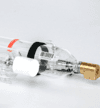Thông tin laze
The scientific name of ZAMIA Q series CO2 laser is all-metal seal-off RF-excited diffusion cooling slab-waveguide laser, generally referred to as RF slab waveguide CO2 laser.
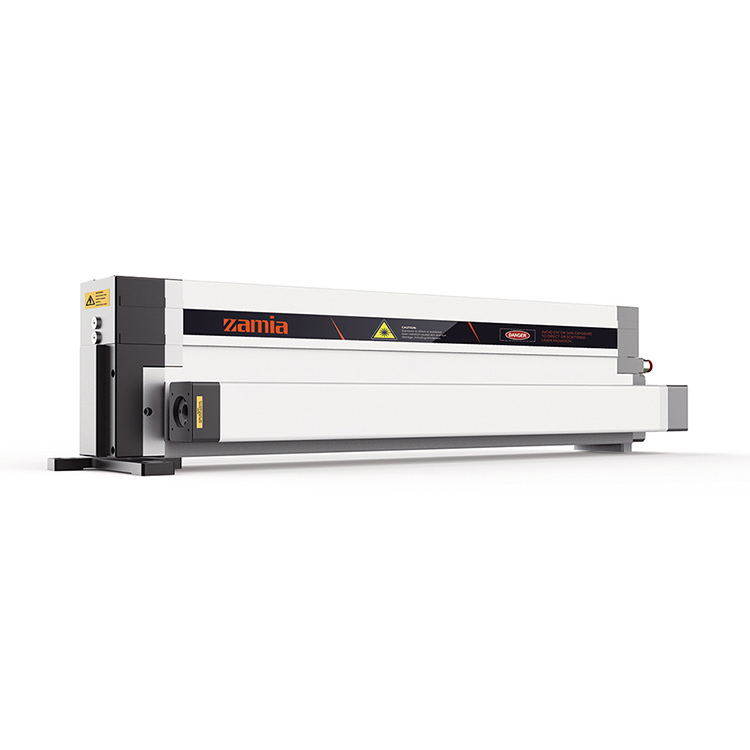 Different from the all-waveguide CO2 laser, the discharge area of the slab waveguide CO2 laser is composed of two rectangular metal slabs placed in parallel and spaced apart by millimeters. Two optics are mounted at both ends of the two metal slabs to form a laser resonator for generating laser.
Different from the all-waveguide CO2 laser, the discharge area of the slab waveguide CO2 laser is composed of two rectangular metal slabs placed in parallel and spaced apart by millimeters. Two optics are mounted at both ends of the two metal slabs to form a laser resonator for generating laser.
The cavity mirror has curvature, the curvature radius of front cavity mirror is shorter, and the one of rear cavity mirror is longer, so the front cavity mirror is shorter than the rear cavity mirror in length. The two cavity mirrors are mounted in alignment on one side, and the laser beam is output from the other side of the front cavity mirror. As shown below: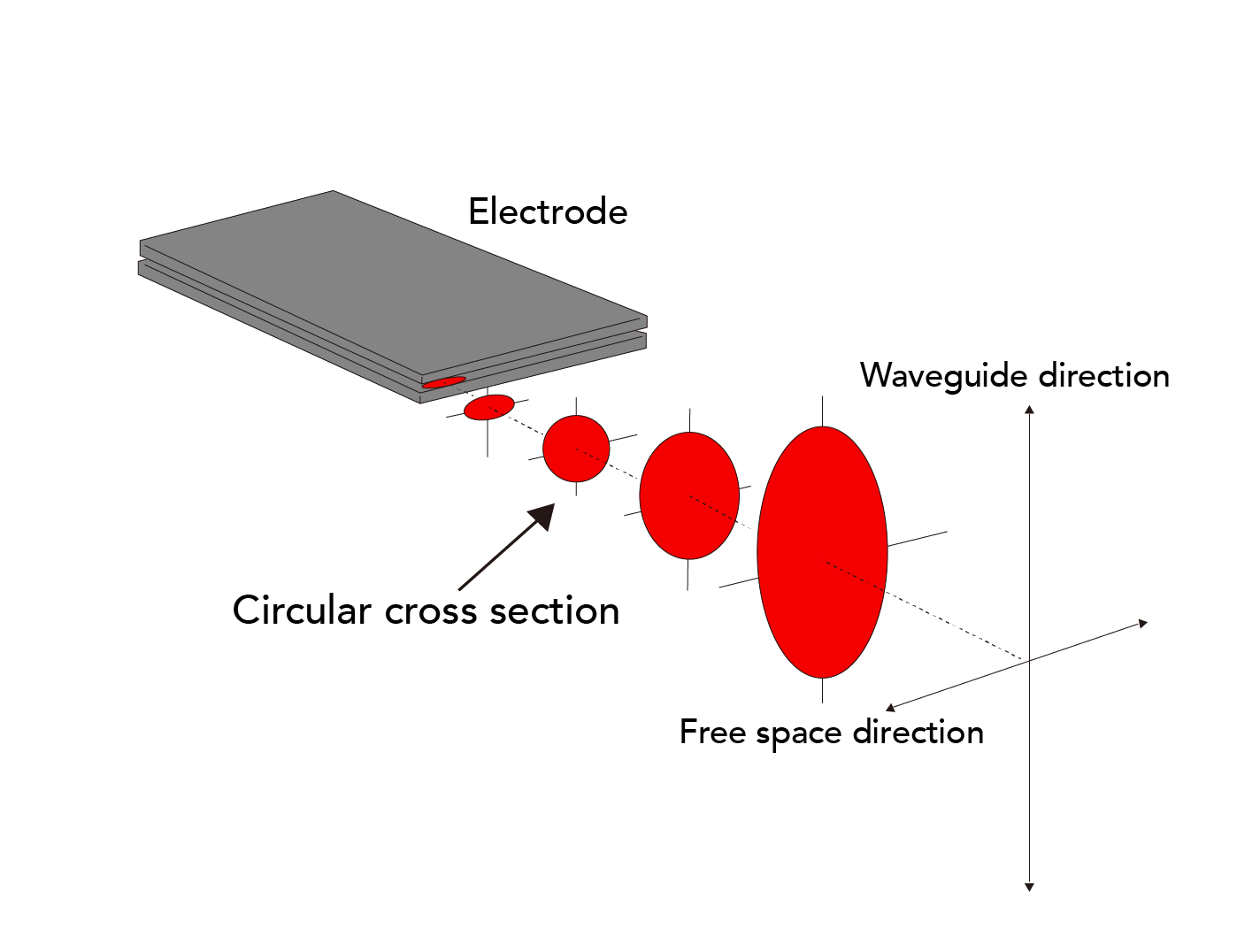 The space between the two electrode plates is several hundred millimeters long, several tens of millimeters wide, and several millimeters high. It can be seen from the numerical value that the size of its height direction is similar to that of the laser beam, much smaller than that of its width direction, so its shape is just like a flat sheet. In this space, discharge occurs and gain medium is generated, and the laser oscillating between the two resonators passes back and forth through this space many times.
The space between the two electrode plates is several hundred millimeters long, several tens of millimeters wide, and several millimeters high. It can be seen from the numerical value that the size of its height direction is similar to that of the laser beam, much smaller than that of its width direction, so its shape is just like a flat sheet. In this space, discharge occurs and gain medium is generated, and the laser oscillating between the two resonators passes back and forth through this space many times.
Each time the laser beam passes through this space, it shows different transmission laws in the height and width directions: the size in the width direction is much larger than the size of the laser beam, so the laser beam passes freely in this direction without restriction; the size of the height direction is similar to the size of the laser beam, so the laser beam is constrained to pass through in this direction each time. Because the laser beams oscillate in the cavity for many times, pass through the flat space between the two plates for many times, and is output on one side of the front mirror, the final output laser beams are asymmetric in the width and height directions.
In addition, the divergence angle and spot size of the laser beam in the two directions are different: the divergence angle is small in the width direction and large in the height direction, which means that the beam quality in the two directions is different. The schematic diagram of laser beam transmitted in free space after output from the resonator is as follows:
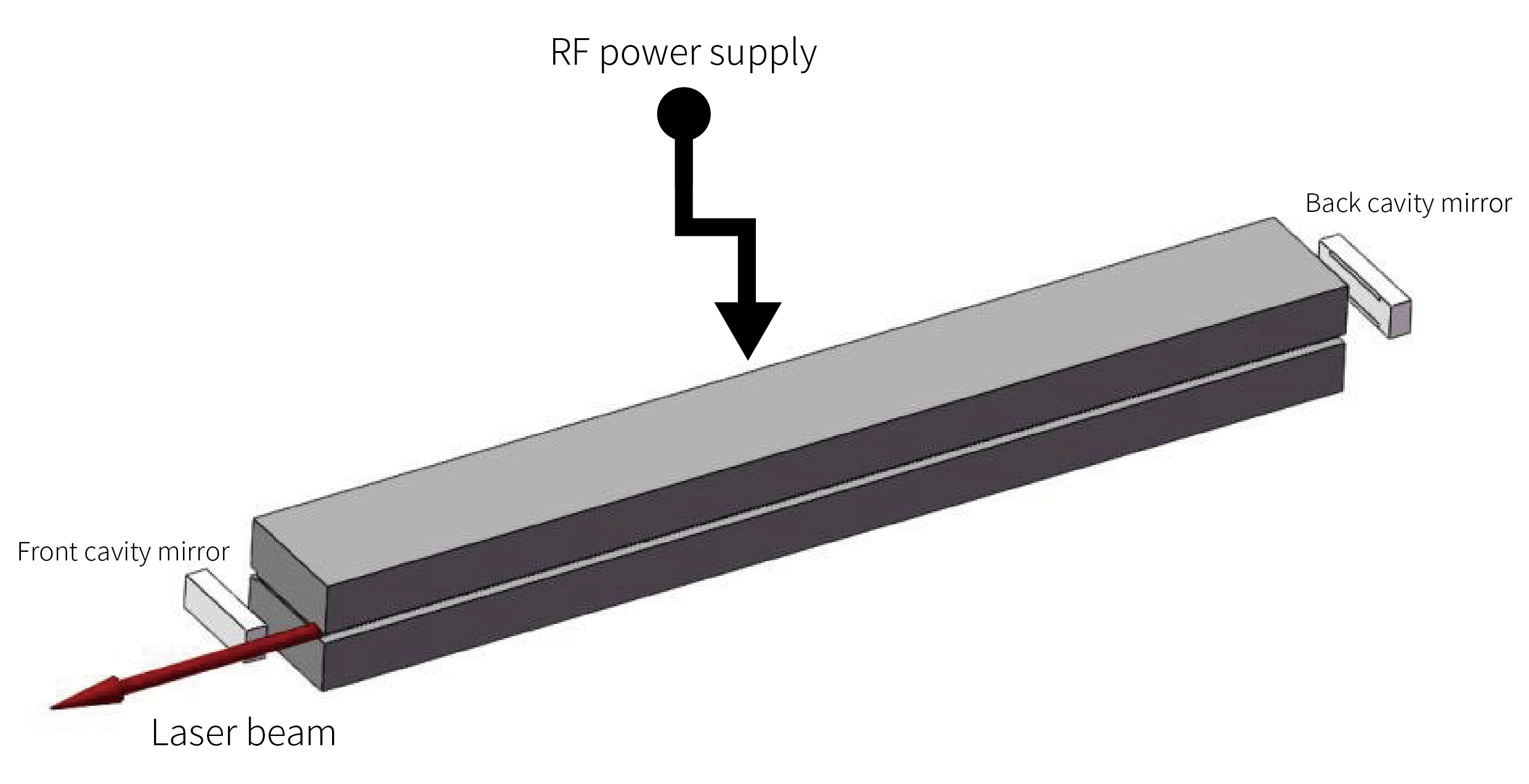
The above figure shows that the laser beam will change the shape of the spot with the different transmission distance, showing an elliptical spot in the far field. This laser beam is directly focused and presents an elliptical spot at the focus position. If the focus point shows an elliptical laser spot, the thickness of the lines in the two directions will be inconsistent during processing, and the cutting effect will be different, thus finally affect the processing effect.
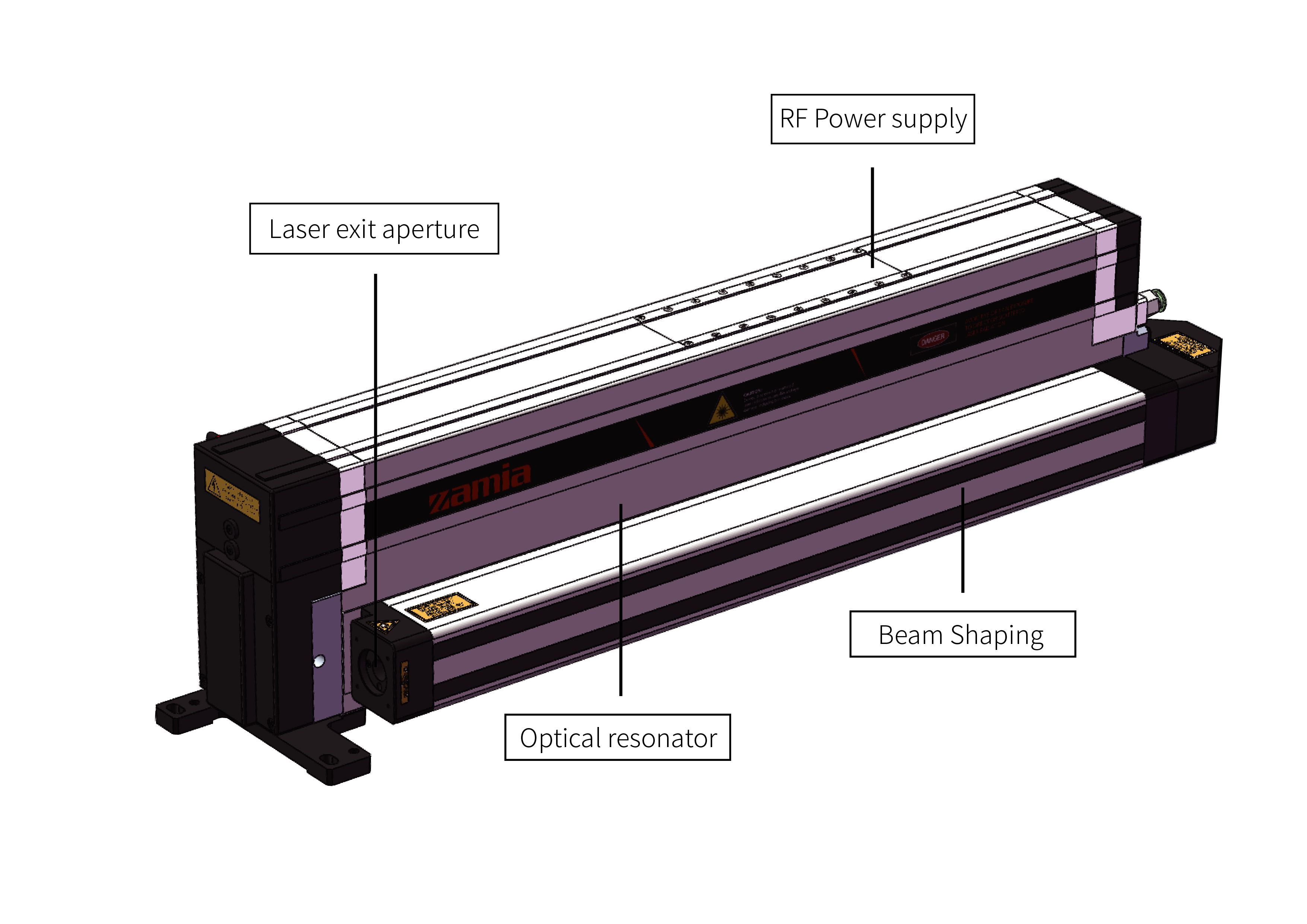
To obtain laser beams with the same divergence angle and the same spot size in two directions, it is necessary to shape above-mentioned asymmetric laser beams to obtain the same beam quality factors in the two directions, so that the circular symmetrical Gaussian beams of quasi-fundamental mode can be obtained. The circular focused spot can be gained by laser processing equipment such as marking machine and cutting machines.
To shape the laser beam into a complex system composed of a series of lens, asymmetric optical elements, such as cylindrical lenses or cylindrical mirrors, are generally introduced in two directions.

The cavity mirror has curvature, the curvature radius of front cavity mirror is shorter, and the one of rear cavity mirror is longer, so the front cavity mirror is shorter than the rear cavity mirror in length. The two cavity mirrors are mounted in alignment on one side, and the laser beam is output from the other side of the front cavity mirror. As shown below:

Each time the laser beam passes through this space, it shows different transmission laws in the height and width directions: the size in the width direction is much larger than the size of the laser beam, so the laser beam passes freely in this direction without restriction; the size of the height direction is similar to the size of the laser beam, so the laser beam is constrained to pass through in this direction each time. Because the laser beams oscillate in the cavity for many times, pass through the flat space between the two plates for many times, and is output on one side of the front mirror, the final output laser beams are asymmetric in the width and height directions.
In addition, the divergence angle and spot size of the laser beam in the two directions are different: the divergence angle is small in the width direction and large in the height direction, which means that the beam quality in the two directions is different. The schematic diagram of laser beam transmitted in free space after output from the resonator is as follows:


To obtain laser beams with the same divergence angle and the same spot size in two directions, it is necessary to shape above-mentioned asymmetric laser beams to obtain the same beam quality factors in the two directions, so that the circular symmetrical Gaussian beams of quasi-fundamental mode can be obtained. The circular focused spot can be gained by laser processing equipment such as marking machine and cutting machines.
To shape the laser beam into a complex system composed of a series of lens, asymmetric optical elements, such as cylindrical lenses or cylindrical mirrors, are generally introduced in two directions.

